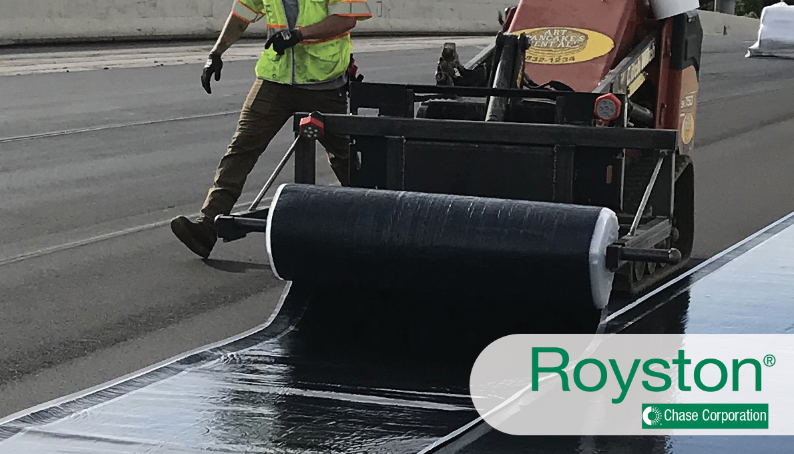Pavement distress manifests in various ways. We have all encountered potholes while driving. That...
Membrane Surface Preparation

Surface preparation is the critical first step in the installation of a bridge deck waterproofing system. The substrate can be steel, concrete, aged asphalt, or wood.
A properly prepared substrate should have a surface profile and be free of all debris, dust and contamination that could interfere with the adhesion of a liquid primer or tack coat to the surface.
A surface profile is important because it allows the prime coat to form a mechanical bond to the surface. In addition, a clean surface free from contamination and debris will allow the primer to form a chemical bond.
Each of the various substrates that comprise a bridge deck can require different methods of preparation. For instance, a wooden deck requires a scratch or levelling course of asphalt. The levelling course will provide a smooth surface for the installation of the sheet membrane.
Preparation of a steel bridge deck typically requires an abrasive blast cleaning prior to the application of the prime coat. The specific NACE/SSPC level of surface preparation will be cited in the respective State Department of Transportation Construction Standards.
The preparation of an existing concrete deck requires a structurally sound surface. All of the previously installed sheet membrane should be completely removed. All concrete repairs, in conformance with the state agency’s specifications, should be completed prior to the application of the prime coat. If there is exposed rebar, burrs or surface irregularities, they should be removed.
Any grooves in the deck, resulting from the milling of the deck, should not exceed one-quarter inch from peak to valley. The grooves are natural areas where the primer can pool or puddle. If this occurs, the pooled primer should be removed by a roller application. And, the concrete surface should have a smooth broom finish, equivalent to an ICRI concrete surface profile #3.
If the bridge deck is new concrete, the concrete should be cured for a minimum of seven days or per the respective State Department of Transportation Construction Standards. Also, it is not uncommon for box culverts to have waterproofing sheet membranes installed on them. The surface preparation for a culvert can be different from a cast-in place concrete deck due to the use of pre-cast concrete to form the culvert. It is common for the pre-cast concrete culvert manufacturers to apply a damp-proofing coating on the pre-cast concrete. The issue is the removal of the damp-proofing coating as part of the surface preparation for the primer. The damp-proofing coating has to be removed in order to ensure the proper adhesion – mechanical and chemical - of the primer to the pre-cast concrete substrate. The standard method of preparation would be a 3,500 - psi pressure wash to remove the damp-proofing material.
The next consideration is the moisture content of the concrete. Moisture content is an important factor to consider for the preparation of all the above substrates prior to the application of the primer. Typically, though the percent may vary slightly from specification to specification, the moisture content should not exceed four percent, and there should not be standing water on the receiving surface prior to applying the primer on any waterproofing membrane installation.
Surface preparation is a critical element in the application of the primer coat prior to the installation of the waterproofing membrane. There are a number of variables that can affect the project. Chase Corporation can assist with the solutions on your projects.







